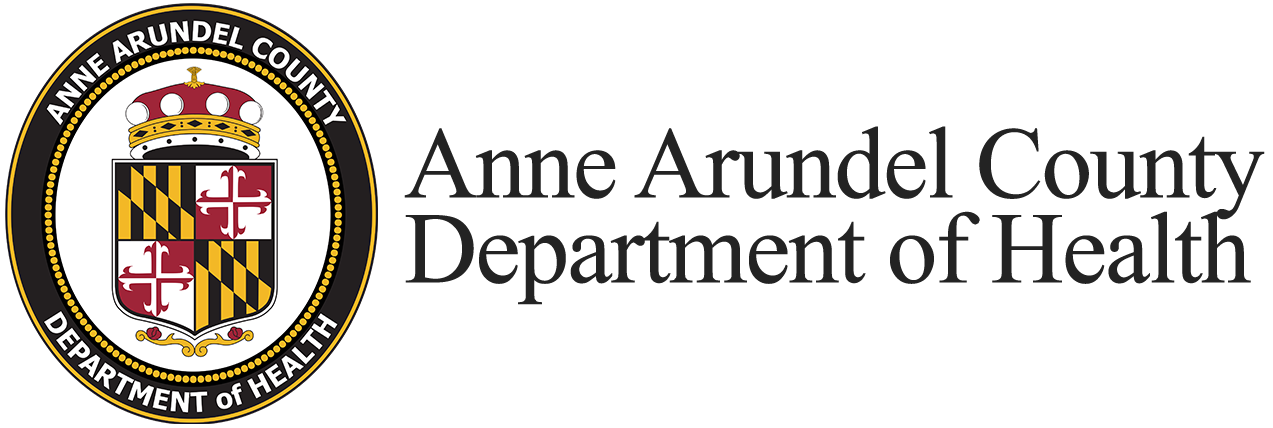Frequently Asked Questions
What is Oral Cancer?
Oral cancer is a form of cancer found in the tissues of the mouth, lips, pharynx and part of the throat. This cancer is commonly referred to as mouth, tongue and throat cancer. From 2017-2021, approximately 850 Marylanders were diagnosed with oral cancer each year. The rate of diagnosis in this period was higher in Anne Arundel County when compared to both national and state averages.
Oral cancer ranks eighth as the most common cancer in men, and 13th as the most common cancer in women. The American Cancer Society estimates that in 2024, about 12,230 people will die from oral cancer. The 5-year survival rate of oral cancer is 66 percent; therefore, early detection is essential. To check for possible suspicious areas, it is important that you have an annual exam performed by a doctor, dentist or dental hygienist.
The risk factors for oral cancer include:
Tobacco use
- Tobacco use, including cigarettes, chew, dip, snuff, pipes and cigars, drastically increases the risk of developing oral cancer.
- Tobacco use is one of the strongest risk factors for head and neck cancers, including oral cavity and oropharyngeal cancer. The risk for these cancers is much higher in people who smoke than in people who don't. Most people with these cancers have a history of smoking or other tobacco exposure, like chewing tobacco. The more you smoke, the greater your risk.
- Quitting smoking will help reduce the risk of oral cancer. Download the “Roadmap to Quitting” Workbook, order a FREE Quit Smoking Kit or call the Community Education Line at 410-222-7979.
Alcohol consumption
- Drinking alcohol increases the risk of developing oral cancer. Heavy drinkers have a higher risk than light drinkers.
- The risk for oral cancer increases when tobacco and alcohol are used together.
- If you choose to drink alcohol, do so in moderation. Moderate drinking means up to one drink a day for women and up to two drinks a day for men. Twelve ounces of regular beer, 5 ounces of wine, or 1½ ounces of 80-proof distilled spirits count as a drink.
Age
- Cancers of the oral cavity and oropharynx usually take many years to develop, so they're not common in young people. Most patients with these cancers are older than 55 when the cancers are first found. HPV-linked cancers tend to be diagnosed in people younger than 50.
Gender
- Men are two times more likely than women to develop oral cancer.
Human Papillomavirus (HPV)
- HPV can infect both men and women, and people generally do not have noticeable symptoms.
- HPV infection can cause cancer in the back of the throat, including the base of the tongue and tonsils. HPV is thought to cause 70% of oropharyngeal cancers in the United States.
- For more information on HPV, visit cdc.gov/hpv.
Sun exposure
- UVA and UVB radiation are types of invisible ultraviolet rays that come from the sun and tanning devices, and both are known to cause skin cancer. Skin cancer can develop on the lips and skin around the mouth.
- Learn more about protecting your skin from the sun at aahealth.org/getsunsmart.
Poor diet
- Several studies have found that a diet low in fruits and vegetables is linked with an increased risk of cancers of the oral cavity and oropharynx.
- For more information about eating a healthy diet, visit aahealth.org/communityeducation/nutrition.
It is important for everyone to have an oral exam even if there are no known risk factors or symptoms; Your health care professional can review possible risk factors for oral cancer with you.
Oral cancer symptoms include:
- A sore in the mouth that does not heal (the most common symptom)
- A pain in the mouth or throat that does not go away
- Trouble chewing or swallowing
- White or red patches inside the mouth
- Numbness of your tongue or other areas of your mouth
- Numbness of your lower lip or chin
- Sore throat or feeling that something is caught in the throat
- Bleeding in your mouth
- Loose teeth
- Voice changes
- Difficulty moving the jaw or tongue
- Swelling of your jaw that causes dentures to fit poorly or become uncomfortable
- Weight loss
- Pain in one ear without hearing loss
- A lump or thickening in the cheek and/or neck (usually occurs when the cancer has progressed)
It is important to consult with a dental or medical provider if any of these symptoms last more than two weeks. Waiting for pain is often too late; early detection is key.
What you can do to protect your mouth:
- There is a better chance for a cure if oral cancer is found early. Talk to your health care provider or dentist about receiving an annual oral exam.
- Do not use tobacco products. For information on quitting smoking, call the Community Education Line at 410-222-7979.
- Practice good oral hygiene; for tips, visit cdc.gov/oral-health/prevention.
- Use a lip balm with an SPF of at least 30.
- Eat a variety of fruits and vegetables as part of a low-fat, high fiber diet.
- Limit alcohol consumption.
Early detection is essential. Once the cancer spreads, the survival rate decreases.
Additional Information:
- Anne Arundel County Department of Health Dental Services provides low-cost dental health services to eligible County residents.
- Are You at Risk for Oral Cancer?: What African American Men Need to Know
- Oral Cancer Brochure
- Power to Quit Smoking Kit
- Roadmap to Quitting Workbook - English
- Roadmap to Quitting Workbook - Spanish
- Free Smoking Cessation Classes
- Healthy Eating Kit
- American Cancer Society
- American Dental Association
- National Cancer Institute
- U.S. Centers for Disease Control and Prevention
